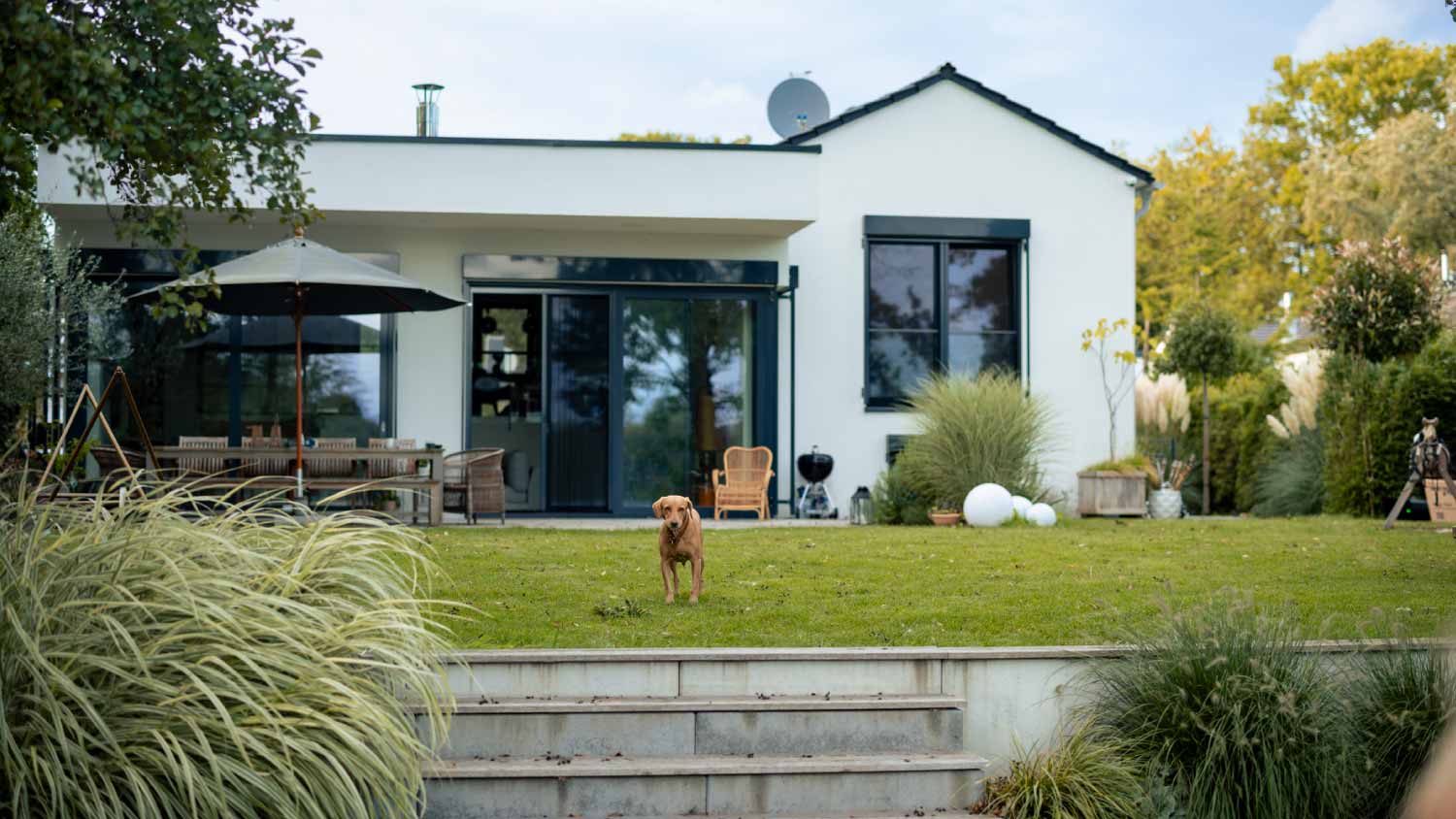7 Tips to Protect Your Pets From Wild Animals
Coyotes, foxes, and hawks, oh my!


You may not live high in the Colorado Rockies or deep in the Sierra Nevadas, where wolves, bears, and mountain lions are a common sight, but that doesn't mean your domestic pets are safe from wild animals. Even in metropolitan environments, foxes, coyotes, and even birds like hawks, have been known to attack small dogs and outdoor cats. As sprawl increases and natural habitats for predator species are overtaken by residential spaces, incidents of wild animals attacking four-legged family members are becoming more common. Read on for our tips on how to protect your pets from wildlife.
1. Install a Fence
Fencing your yard is essential in keeping the wild out of your backyard. Six-foot fences are ideal for keeping out sneaky foxes and other animals that might pose a danger to your pets. In a perfect world, your fence would also extend underground at least 18 inches to deter animals who might try to dig under, but that may be impractical. Installing motion-activated lights along your fence is also an excellent deterrent for a predator on the hunt.
2. Scoop the Poop
Canine predators like coyotes are territorial. If they smell another animal’s feces, they might consider it a threat to their domain and look to remove that threat, even if it is only your lovable little Shih Tzu. Picking up feces from your yard will remove some of the pheromones associated with territory and draw less attention from predators in the area.
3. Feed Your Pets Indoors

Don’t leave pet food or any food scraps outdoors, and ensure garbage can lids lock down tightly. Leaving food outdoors is like announcing a free buffet to all the would-be predators in the area, and once they’ve had one free meal, they may stick around or even start to see your yard as their hunting ground, putting your pets in danger. Feeding pets on the deck or back porch could lead to close encounters or even wildlife getting inside your home.
4. Walk Your Pets on a Leash
Leash walking your pets is vital for their safety. Not only does it prevent them from running away, but it also makes it easy for you to keep them from interacting with any wildlife that may be nearby. If you walk your pet in a wilderness area or other spot where encountering predators is likely, adding bear spray and a heavy walking stick to your day pack is a safe move. And while it seems unbelievable, hawks have been known to swoop down and pick up small dogs like chihuahuas. Having your dog on a leash will prevent an aerial attacker from flying away with your fur baby.
5. Keep Pets Out of Brush and Heavily Wooded Areas
It might be tempting to let your dog sniff around in an overgrown area while hiking, but these brushy areas are great hiding spots for snakes and other dangerous critters. Stay on the path and keep your pet on a short leash while hiking.
6. Don’t Feed Wildlife
The squirrel feeder may lead to some cute squirrel antics, but where there’s prey, predators will eventually show up. Feeding your local wildlife, even the adorable ones like squirrels, will attract animals who prey on squirrels, and animals who prey on squirrels can also pose a danger to your dogs and cats.
7. Keep Vaccines Up to Date
Despite the best precautions, accidents sometimes happen. If a predator attacks your pet, an up-to-date vaccine is the best defense against diseases like rabies. Rabies is most often spread through bites from coyotes, foxes, raccoons, bats, and skunks, according to The Mayo Clinic. Some laws require pets who have been bitten to quarantine at a veterinarian's office for as long as two weeks. Pets who have been bitten by a wild animal and then bite a human, whether intentionally or not, may need to be euthanized if they are unvaccinated.















